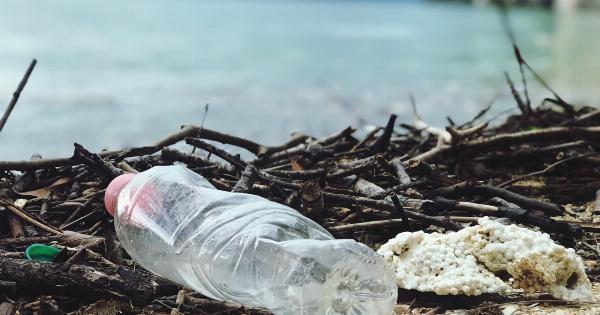Microplastics are tiny pieces of plastic that measure less than 5 millimeters in size. They come from a variety of sources including cosmetics, clothing fibers, and microbeads in personal care products.
The dangers of these small plastic particles have been recognized for some time now, but the full extent of their impact on human health is still being studied and debated.
What are Microplastics?
Microplastics are plastic particles that are smaller than 5 millimeters, or roughly the size of a sesame seed.
They can be found in a variety of materials, including synthetic fabrics, plastic packaging, and personal care products like toothpaste and facial scrubs.
One of the major concerns with microplastics is their ability to absorb and concentrate toxins in the environment. When animals ingest these particles, they can also ingest the toxic substances attached to them.
How do Humans Consume Microplastics?
While most people don’t intentionally consume plastics, it is becoming increasingly clear that we are all exposed to them in some way. For example, microplastics can enter our water supply through the breakdown of larger plastic pieces.
They can also be found in household dust and food packaging materials.
The most common way that people consume microplastics is through their diets. A study by the University of Victoria found that people in North America consume an average of 70,000 microplastic particles every year through the food they eat.
This number is much higher in countries where seafood is a large part of the diet, with some people consuming up to 100,000 particles per year.
What are the Health Risks of Consuming Microplastics?
The health risks of consuming microplastics are still being studied, but there is evidence to suggest that they can be harmful to human health.
For example, a study published in the journal Environmental Science & Technology found that microplastics can cause inflammation in the gut and damage to the liver.
There is also concern that microplastics may be able to transfer toxic chemicals to the human body.
A study published in the journal Environmental Health Perspectives found that BPA, a chemical commonly found in plastics, can be transferred to the human body through the ingestion of microplastics. BPA has been linked to a number of health problems, including hormonal imbalances and cancer.
How Can We Reduce Our Exposure to Microplastics?
Reducing our exposure to microplastics can be a challenge, but there are steps we can take to minimize our risk. For example, we can avoid buying products that contain microbeads, such as facial scrubs and toothpaste.
We can also choose to buy products made from natural fibers instead of synthetic ones, like cotton instead of polyester.
We can also reduce our plastic usage by using reusable bags, water bottles, and containers. This helps to reduce the amount of plastic that ends up in the environment, where it can break down into microplastics.
The Bottom Line
The impact of microplastics on human health is still being studied, but evidence suggests that they can cause inflammation and damage to the liver.
The best way to reduce our exposure to microplastics is to choose natural fibers and avoid products containing microbeads. We can also reduce our plastic usage by using reusable bags, water bottles, and containers.






























